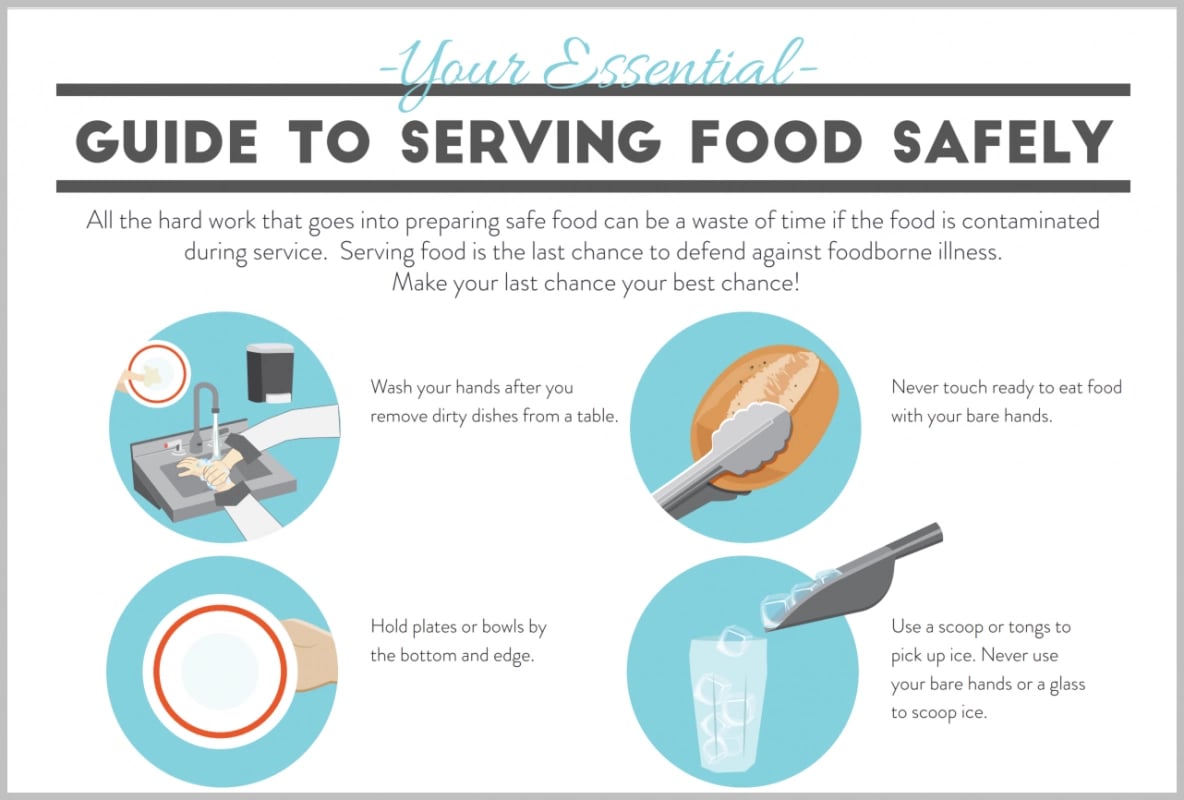
Using Infographics for Food Safety

One of the biggest problems faced by food service professionals and food safety trainers alike is the issue of how to capture and hold attention when teaching foodservice employees about food safety. There are a variety of ways to do this, ranging from offering broader access to classes through online training to increasing the interactivity of food safety sessions. One of the most effective methods of teaching and reinforcing food safety best practices comes in the form of simple infographics.
Life in a visual world
The digital age has been marked by the constant fight for the attention of consumers - this has pushed marketing efforts into an avenue that relies much more on visual elements rather than purely on text. The goal is to capture and hold the attention of a diverse audience, and visuals do a far better job of this than text, as they subvert boundaries like language and understanding of a particular subject. Marketing studies have shown that infographics are shared online three times more than other content, and that people are 323% better at following directions in a format which uses a combination of visuals and text. The power of striking visuals in a world constantly vying for your attention simply cannot be overstated - this is part of what makes infographics such a powerful tool.
Infographics vs. text
One of the traditional ways of teaching and upholding food safety regulations in many restaurants and food service establishments is simple signage which predominantly features text and presents information in way that comes off as largely uninteresting to most. While this signage is certainly capable of getting the job done because of the important information being used, it doesn’t offer the visual interest that infographics do. Signage is far wordier than visual-based infographics, losing the attention of anybody being forced to learn or refresh themselves about food safety rules and regulations.
Infographics have the distinction of being both visually pleasing and able to present a wide range of vital information in a simple, easy-to-read manner that is laid out for visual learners. Infographics offer the most effective way for food safety professionals to deliver information effectively and hold the attention of their subjects - they are even used by a number of official government bodies who regulate food safety, including the Canadian Food Inspection Agency and the European Food Safety Authority.
What infographics can do for you
Incorporating infographics into your business can have tremendous advantages for your employees and management, as it will help to avoid confusion or misunderstandings regarding your establishment’s food safety regulations. Visual learning is one of the best ways to ensure that your food safety practices are upheld and understood by all employees, which is where infographics come into play. Displaying them in commonly used areas like kitchens and break rooms will ensure that they are actively seen and read by staff members, reminding them of common practices like food storage, preparation, hand cleaning, and sanitation among other vital food service information.
Infographics can help your organization avoid common communication errors like language barriers through visual storytelling, which is almost universally understood and not entirely reliant upon language comprehension. Avoiding these common errors in communication can help your business easily avoid food safety citations during inspections, as noted in a previous Food Safety Market blog post. Infographics from Food Safety Market are available in both French and English languages, making visual storytelling and direction easier for multilingual Canadian businesses.

